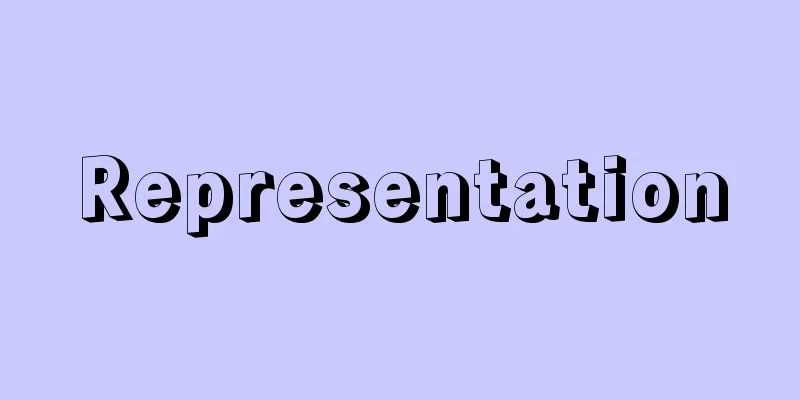Representation

|
It generally means something that is present in the mind or consciousness. It is usually used as a translation of representation (English), représentation (French), or Vorstellung (German). As is clear from the fact that the Latin root of the English and French words, repraesentatio, means "to make present again (re-)," the word "representation," at least in its usage since the early modern period, is used as a term to indicate an aspect of an object that correlates with the object-positing and reflection functions of human "consciousness." The modern philosophy of consciousness internalism and subjectivism since Descartes, which tries to incorporate everything into human consciousness, can be seen as reaching a peak in Schopenhauer's philosophy of "the world as will and representation," which inherited Kant's philosophy of dissolving everything in the world into the representation of human consciousness, and in Nietzsche's philosophy of "perspectivism," which similarly regards everything in the world as the product of interpretation by the will of power. This modern anthropocentric subjectivist philosophy, or metaphysics, is nothing less than the foundation of the rationalistic technological civilization of modern Western Europe. However, today, reflection on the one-sidedness of viewing all things only from the perspective of an object of manipulation by human consciousness has become one of the main themes of modern philosophy from various angles. [Megumi Sakabe] Source: Shogakukan Encyclopedia Nipponica About Encyclopedia Nipponica Information | Legend |
|
一般に心または意識に現前するものを意味する。通常は、representation(英語)、représentation(フランス語)、Vorstellung(ドイツ語)の訳語として使われる。英語、フランス語の語源であるラテン語repraesentatioは「ふたたび(re-)現前せしめること(praesentatio)」を意味することからも明らかなように、「表象」の語は、少なくとも近世以後の用法においては、人間の「意識」の対象定立作用、反省作用に相関する対象の側面を指示する用語として使われる。 いっさいを人間の意識に取り込んで考えようとする、近世のデカルト以来の意識内在主義的、主体主義的哲学は、カントを受け継いで世界のいっさいを人間意識の表象に解消させるショーペンハウアーの「意志と表象としての世界」の哲学から、さらにそれを受けて、同じく世界のいっさいを権力意志による解釈の産物とみなすニーチェの「遠近法主義」の哲学において一つの頂点に達するとみることができる。この近世の人間中心主義的な主体主義の哲学、あるいは形而上(けいじじょう)学は、まさに、西欧近世の合理主義的技術文明の基盤をなすものにほかならない。しかし今日では、いっさいの事物を、人間意識の操作対象という側面からだけみることの一面性への反省が、さまざまな角度から現代哲学の主要テーマの一つとなっている。 [坂部 恵] 出典 小学館 日本大百科全書(ニッポニカ)日本大百科全書(ニッポニカ)について 情報 | 凡例 |
Recommend
Gujarat [State] (English spelling)
A state in the westernmost part of India, facing t...
Lorentz-Lorenz's formula - LorentzLorenz's formula
This formula expresses the relationship between th...
Mounier, Emmanuel
Born: April 1, 1905 in Grenoble [Died] March 22, 1...
injection structure
...The cause is thought to be the removal of unso...
Okikurage - Okikurage
A jellyfish of the family Oxygeidae, class Scypho...
Picture frame stage (English: picture frame stage)
A stage that is framed by a proscenium arch and ex...
Farmer's lung
Also known as farmer's lung disease, this is a...
Octocorallia
…All of them are marine, and most of them are att...
Engel, CL - Engel
…The reason given was that it was closer to Russi...
January
…The ancient Roman god Janus was the guardian dei...
General worker dispatch business - Ippanroudoshakenjigyo
A type of labor dispatch business. A labor dispatc...
Tsuyama Basin
A basin in the northeastern part of Okayama Prefe...
Eastern Sudanic languages - Eastern Sudanic
The Chari-Nile languages are a subdivision of th...
Osue no ma
...The name of men and women who served the Imper...
Fuso [town] - Fuso
A town in Niwa District, northwest of Aichi Prefec...









